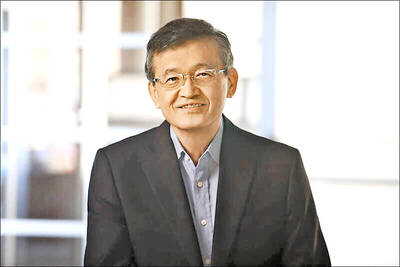JAPAN
Unemployment rate falls
The unemployment rate has fallen for the first time in three months, potentially feeding into higher wages and providing support for the Bank of Japan’s sustainable inflation goal. The jobless rate dropped to 2.6 percent last month, as the number of those without jobs declined by 150,000 from the previous month, the Ministry of Internal Affairs said yesterday. Economists had expected the unemployment rate to decline to 2.7 percent. Separate data showed the jobs-to-applicants ratio remained unchanged from the previous month at 1.32, meaning there were 132 jobs available to every 100 applicants and indicating continued relative tightness in the labor market. “Various economic indicators show that the state of labor shortage is returning to pre-pandemic levels or worse, and there is strong pressure to raise wages,” SMBC Nikko Securities Inc economist Koya Miyamae said.
AUSTRALIA
New home approvals tumble
Approvals to build new homes tumbled to the lowest level in 11 years, driven by fewer permits for apartment buildings, suggesting weak residential property investment would continue to drag on the economy. Total dwelling approvals slid 8.1 percent last month from a month earlier as permits for apartments plunged 16.5 percent, Australian Bureau of Statistics data showed yesterday. While the monthly series can be volatile, the trend has been weak for an extended period, with total approvals falling 24.1 percent from a year earlier. “Total dwellings approved fell to the lowest level since April 2012,” Australian Bureau of Statistics head of construction statistics Daniel Rossi said in a statement. “Private sector house approvals also continued to decline.”
UNITED KINGDOM
Retail prices up 9 percent
Prices in stores are rising at a record pace as the cost-of-living crisis shows little indication of easing. Shop price inflation accelerated to 9 percent this month, a new peak for an index that started in 2005, the British Retail Consortium said yesterday. That was an increase from 8.8 percent last month. “To help mitigate the impact of inflation, shoppers are saving money by looking for seasonal promotions on the high street and taking advantage of the price reductions offered by supermarket loyalty schemes,” said Mike Watkins, head of retailer and business insight at NielsenIQ, which produces the data for the British Retail Consortium. Food inflation decelerated to 15.4 percent this month, down from 15.7 percent last month, the consortium said. Lower energy and commodity costs meant lower prices on staples including butter, milk, fruit and fish.
SWITZERLAND
GDP growth beats forecasts
The economy picked up momentum at the beginning of the year after a stagnant finish to last year, while industry outlook and factory orders point to more difficult times ahead. GDP grew by 0.5 percent in the first quarter, government data published yesterday showed. That exceeded every single economist estimate in a Bloomberg survey, which had a median forecast of 0.1 percent. The main driver of the recovery was domestic consumption, which made up for flat government demand. The KOF Economic Barometer, published separately yesterday, declined a second consecutive month this month, showing that the “outlook for the Swiss economy for the middle of 2023 is thus deteriorating further and remains at a below-average level.”

Intel Corp chief executive officer Lip-Bu Tan (陳立武) is expected to meet with Taiwanese suppliers next month in conjunction with the opening of the Computex Taipei trade show, supply chain sources said on Monday. The visit, the first for Tan to Taiwan since assuming his new post last month, would be aimed at enhancing Intel’s ties with suppliers in Taiwan as he attempts to help turn around the struggling US chipmaker, the sources said. Tan is to hold a banquet to celebrate Intel’s 40-year presence in Taiwan before Computex opens on May 20 and invite dozens of Taiwanese suppliers to exchange views

Application-specific integrated circuit designer Faraday Technology Corp (智原) yesterday said that although revenue this quarter would decline 30 percent from last quarter, it retained its full-year forecast of revenue growth of 100 percent. The company attributed the quarterly drop to a slowdown in customers’ production of chips using Faraday’s advanced packaging technology. The company is still confident about its revenue growth this year, given its strong “design-win” — or the projects it won to help customers design their chips, Faraday president Steve Wang (王國雍) told an online earnings conference. “The design-win this year is better than we expected. We believe we will win

Chizuko Kimura has become the first female sushi chef in the world to win a Michelin star, fulfilling a promise she made to her dying husband to continue his legacy. The 54-year-old Japanese chef regained the Michelin star her late husband, Shunei Kimura, won three years ago for their Sushi Shunei restaurant in Paris. For Shunei Kimura, the star was a dream come true. However, the joy was short-lived. He died from cancer just three months later in June 2022. He was 65. The following year, the restaurant in the heart of Montmartre lost its star rating. Chizuko Kimura insisted that the new star is still down

While China’s leaders use their economic and political might to fight US President Donald Trump’s trade war “to the end,” its army of social media soldiers are embarking on a more humorous campaign online. Trump’s tariff blitz has seen Washington and Beijing impose eye-watering duties on imports from the other, fanning a standoff between the economic superpowers that has sparked global recession fears and sent markets into a tailspin. Trump says his policy is a response to years of being “ripped off” by other countries and aims to bring manufacturing to the US, forcing companies to employ US workers. However, China’s online warriors